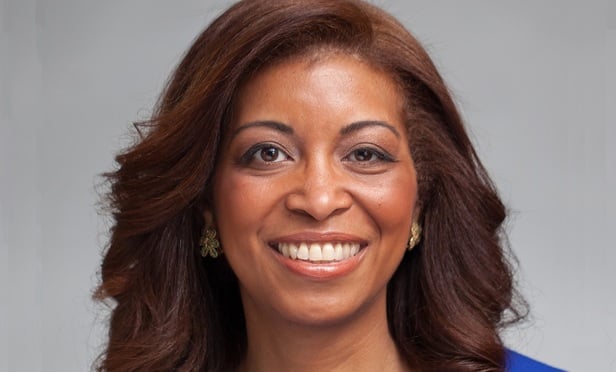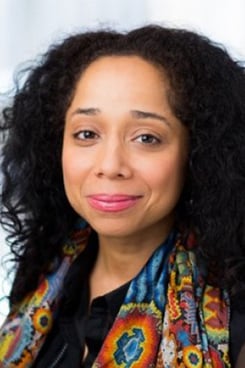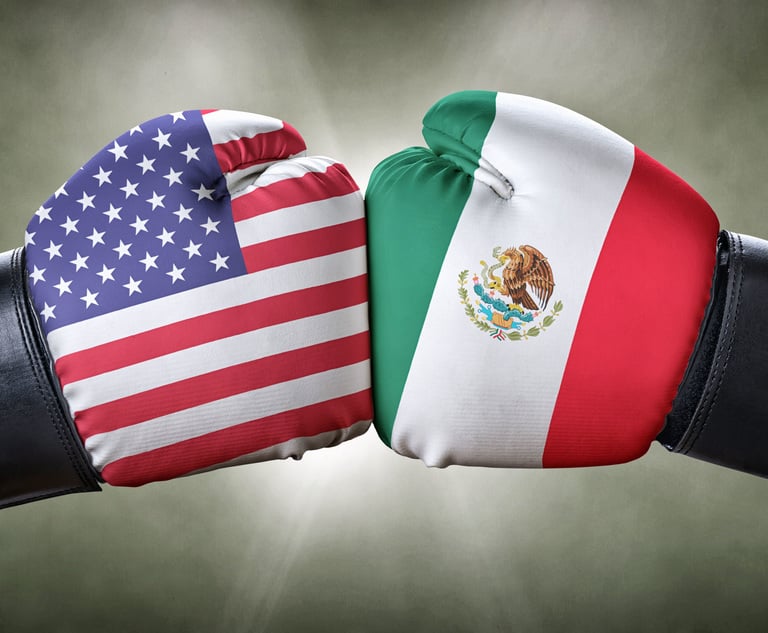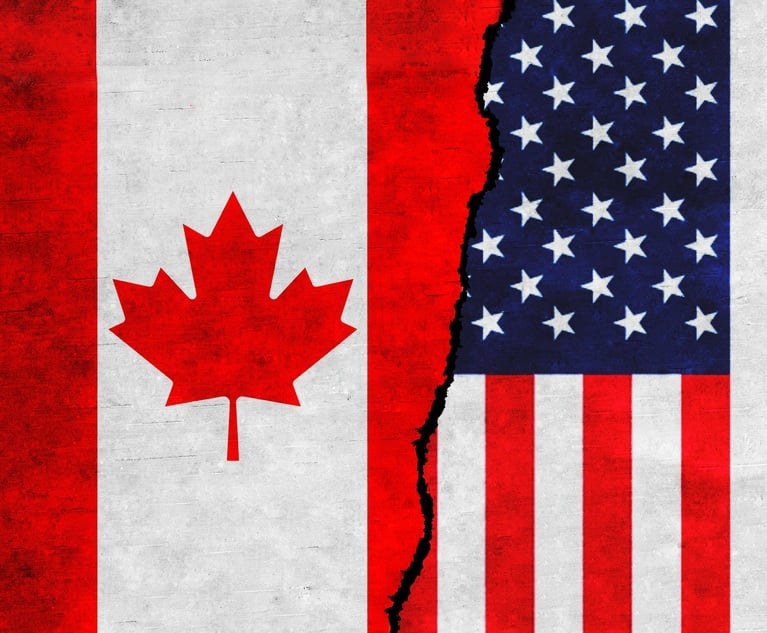 Foley Hoag partner Melida Hodgson
Foley Hoag partner Melida Hodgson
In the world of international arbitration, cases come in all shapes and sizes, from billion-dollar blowouts with big geopolitical consequences to minor dustups involving commercial disputes, regional backwaters or arcane treaties. But the cases tend to have one thing in common: those selected as judges are almost always men, predominately white and disproportionately from wealthy, industrialised nations.
For experienced women and minority lawyers, whose ranks in the legal profession have grown during the past two decades, that means obtaining appointments on international matters can be the steepest climb of their careers, even after rising to law firm equity partnership or judicial appointments. "People say it's a tight club. How one gets on this list is so obscure, obscure even to me," says Shira Scheindlin, an arbitrator who retired this year from the Southern District of New York federal bench. "It's something I'd like to do, but it hasn't been that easy."
While the legal profession is predominately white men in many categories, international arbitration appointments – mostly chosen by lawyers and their clients – is one of the least diverse fields in law, according to multiple studies, statistics and interviews with arbitrators and practitioners.
For instance, only about 10%-15% of the appointed arbitrators in international disputes are women – significantly lower than the representation of women in law firm partnerships.
Meanwhile, international arbitration is taking on more importance in international law and policy. Arbitration institutions are generally reporting a rising number of new matters each year, and international arbitration practices at large firms are flourishing as one of the most lucrative practices in dispute resolution.
As it happens, the more money that is at stake in a dispute, the less likely it is that a woman will have a seat on a panel: The American Lawyer's Arbitration Scorecard last year, looking at matters in a two-year period with at least $1bn in dispute, found that the proportion of women among all arbitrators hovers around 4%.
Racial and ethnic diversity are also hot button issues in international arbitration, though they take on a different tenor there than they hold in the domestic ADR because the practice involves many foreign nationals.
Critics contend that the dominance of North American and European practitioners serving as neutral third parties, or neutrals, gives international arbitration a credibility problem.
"I would like to see equal emphasis placed on all kinds of diversity," not just gender, says Foley Hoag partner Melida Hodgson (pictured above), an arbitrator in international trade disputes under North American Free Trade Agreement rules. "The system needs to look at diversity," for the sake of legitimacy.
A long way to go
Last year, the International Centre for Settlement of Investment Disputes, an arm of the World Bank, reported that 12% of those selected as arbitrators through the organisation were women. The figure was 16% for the London Court of International Arbitration and 10% for the International Chamber of Commerce's International Court of Arbitration, according to research by Lucy Greenwood, a foreign legal consultant at Norton Rose Fulbright.
Edna Sussman, a prominent independent arbitrator in international and domestic commercial disputes, says she is struck by statistics showing appointments of mostly men. "It's got a long way to go," she says.
Still, she points to some anecdotal progress. Five years ago, Sussman says, she never sat with another woman in a three-person tribunal. That happens from "time to time" now, she says.
Since May, hundreds of lawyers, companies and law firms have signed onto the Equal Representation in Arbitration Pledge, which commits signatories to consider appointing women arbitrators wherever possible. For instance, law firms commit to include women on their shortlists of recommended arbitrators to clients. Among the signatories are Baker & McKenzie, Clifford Chance, Dentons, DLA Piper, Freshfields Bruckhaus Deringer, Hogan Lovells, Quinn Emanuel Urquhart & Sullivan, Sidley Austin and White & Case.
But while it has been widely embraced, the pledge is mostly symbolic; it doesn't require anything of signatories or contain any enforcement mechanism.
 Julissa Reynoso (pictured), an international arbitration partner at Chadbourne & Parke, says there is still much room for improvement to appoint US minorities and women.
Julissa Reynoso (pictured), an international arbitration partner at Chadbourne & Parke, says there is still much room for improvement to appoint US minorities and women.
"There are a lot of great lawyers who practice in the arbitration space with diverse backgrounds and, to my knowledge, that has not translated to diverse arbitration panels," she says.
Internationally, the diversity debate has historically centred on national or economic diversity, such as developing countries versus developed countries, says Susan Franck, an international law professor at American University.
There's no uniform practice for tracking diversity on international arbitration panels, which allows the profession to function as an "invisible college", according to an article she wrote last year in the Columbia Journal of Transnational Law. Some diversity data does provide clues, however.
In 2015, among 549 cases registered with the International Centre for Settlement of Investment Disputes, nearly half of the arbitrators, conciliators and ad hoc committee members were European nationals, 21% were from North America, 13% were from Latin America, 10% were from Asia or the Pacific and 6% were from Africa or the Middle East. The US, France and the UK were the countries most frequently represented.
John Townsend, who chairs Hughes Hubbard & Reed's arbitration practice, says it is difficult to list more than a few non-white arbitrators in Europe. Townsend says international arbitration may encourage more diversity than US business arbitration, partly because a party cannot pick an arbitrator from the same country as the party, under the rules of some institutions.
On the other hand, many commercial contracts require particular law, such as UK or New York law, to govern disputes in arbitration, points out Miguel Lopez Forastier, a partner in international arbitration at Covington & Burling.
"If English law governs, you are more likely to appoint a British citizen," Forastier says.
Hard to break in
Edward Kehoe, co-head of King & Spalding's international arbitration practice, says when it is time to recommend an arbitrator to clients, he considers the client's business and the governing law, as well as prior experience with the arbitrator.
"If I were drafting up a shortlist right now, it would be predominantly men," Kehoe acknowledges. That's because he is not as familiar with as many female arbitrators, he adds. In the past 10 years, Kehoe says he has appeared before a female arbitrator only about four times as counsel and has sat on only two panels where a woman was co-arbitrator. Putting forward names he is already familiar with "makes it easier for me to recommend them", Kehoe says.
People recommend people they already know. It's hard to break in when there's a network that's already successful
Arbitrators are typically paid by the hour or on a scale based on the amount in controversy – which can exceed hundreds of millions of dollars. But the appointments are also sought after because they come with tremendous prestige and peer recognition and provide critical experience that can lead to more business.
"People have become famous in the arbitration community and that fame leads to more visibility, which leads to business," says Hodgson of Foley Hoag.
Franck's research suggests that once women break into international arbitration with their first appointment, the frequency of subsequent appointments is roughly equivalent to those of men.
"It's the old classic 'don't apply without experience' problem," says Townsend, Hughes Hubbard ADR chair.
Reynoso, at Chadbourne, says law firms and ADR organisations can also help by promoting and training diverse candidates.
"You need people to promote you, to support you, to give you an opportunity to present yourself in leading publications and leading forums," she says. "You need to be given the opportunity to join the pool and it's very difficult to break in [as an arbitrator]; but once you do, it's much easier to get assigned."
One explanation for the gender gap is that the field of international arbitration as well as other areas of dispute resolution suffers from a "pipeline problem", which will take time to turn around. The field will grow diverse in time, the theory predicts, as women and minorities serving as judges or still developing their practices as advocates seek a second career in ADR.
Scheindlin, the former federal judge and now a JAMS neutral, doubted that the "pipeline" issue is the only reason why women are not being appointed in the same numbers as men. "I assume it's like any other old boys' network. People recommend people they already know," she says. "It's hard to break in when there's a network that's already successful."
This content has been archived. It is available through our partners, LexisNexis® and Bloomberg Law.
To view this content, please continue to their sites.
Not a Lexis Subscriber?
Subscribe Now
Not a Bloomberg Law Subscriber?
Subscribe Now
NOT FOR REPRINT
© 2025 ALM Global, LLC, All Rights Reserved. Request academic re-use from www.copyright.com. All other uses, submit a request to [email protected]. For more information visit Asset & Logo Licensing.
You Might Like
View All
Big Law Sidelined as Asian IPOs in New York Dominated by Small Cap Listings

X-odus: Why Germany’s Federal Court of Justice and Others Are Leaving X

Mexican Lawyers On Speed-Dial as Trump Floats ‘Day One’ Tariffs

Threat of Trump Tariffs Is Sign Canada Needs to Wean Off Reliance on Trade with U.S., Trade Lawyers Say
5 minute readTrending Stories
- 15th Circuit Considers Challenge to Louisiana's Ten Commandments Law
- 2Crocs Accused of Padding Revenue With Channel-Stuffing HEYDUDE Shoes
- 3E-discovery Practitioners Are Racing to Adapt to Social Media’s Evolving Landscape
- 4The Law Firm Disrupted: For Office Policies, Big Law Has Its Ear to the Market, Not to Trump
- 5FTC Finalizes Child Online Privacy Rule Updates, But Ferguson Eyes Further Changes
Who Got The Work
J. Brugh Lower of Gibbons has entered an appearance for industrial equipment supplier Devco Corporation in a pending trademark infringement lawsuit. The suit, accusing the defendant of selling knock-off Graco products, was filed Dec. 18 in New Jersey District Court by Rivkin Radler on behalf of Graco Inc. and Graco Minnesota. The case, assigned to U.S. District Judge Zahid N. Quraishi, is 3:24-cv-11294, Graco Inc. et al v. Devco Corporation.
Who Got The Work
Rebecca Maller-Stein and Kent A. Yalowitz of Arnold & Porter Kaye Scholer have entered their appearances for Hanaco Venture Capital and its executives, Lior Prosor and David Frankel, in a pending securities lawsuit. The action, filed on Dec. 24 in New York Southern District Court by Zell, Aron & Co. on behalf of Goldeneye Advisors, accuses the defendants of negligently and fraudulently managing the plaintiff's $1 million investment. The case, assigned to U.S. District Judge Vernon S. Broderick, is 1:24-cv-09918, Goldeneye Advisors, LLC v. Hanaco Venture Capital, Ltd. et al.
Who Got The Work
Attorneys from A&O Shearman has stepped in as defense counsel for Toronto-Dominion Bank and other defendants in a pending securities class action. The suit, filed Dec. 11 in New York Southern District Court by Bleichmar Fonti & Auld, accuses the defendants of concealing the bank's 'pervasive' deficiencies in regards to its compliance with the Bank Secrecy Act and the quality of its anti-money laundering controls. The case, assigned to U.S. District Judge Arun Subramanian, is 1:24-cv-09445, Gonzalez v. The Toronto-Dominion Bank et al.
Who Got The Work
Crown Castle International, a Pennsylvania company providing shared communications infrastructure, has turned to Luke D. Wolf of Gordon Rees Scully Mansukhani to fend off a pending breach-of-contract lawsuit. The court action, filed Nov. 25 in Michigan Eastern District Court by Hooper Hathaway PC on behalf of The Town Residences LLC, accuses Crown Castle of failing to transfer approximately $30,000 in utility payments from T-Mobile in breach of a roof-top lease and assignment agreement. The case, assigned to U.S. District Judge Susan K. Declercq, is 2:24-cv-13131, The Town Residences LLC v. T-Mobile US, Inc. et al.
Who Got The Work
Wilfred P. Coronato and Daniel M. Schwartz of McCarter & English have stepped in as defense counsel to Electrolux Home Products Inc. in a pending product liability lawsuit. The court action, filed Nov. 26 in New York Eastern District Court by Poulos Lopiccolo PC and Nagel Rice LLP on behalf of David Stern, alleges that the defendant's refrigerators’ drawers and shelving repeatedly break and fall apart within months after purchase. The case, assigned to U.S. District Judge Joan M. Azrack, is 2:24-cv-08204, Stern v. Electrolux Home Products, Inc.
Featured Firms
Law Offices of Gary Martin Hays & Associates, P.C.
(470) 294-1674
Law Offices of Mark E. Salomone
(857) 444-6468
Smith & Hassler
(713) 739-1250








